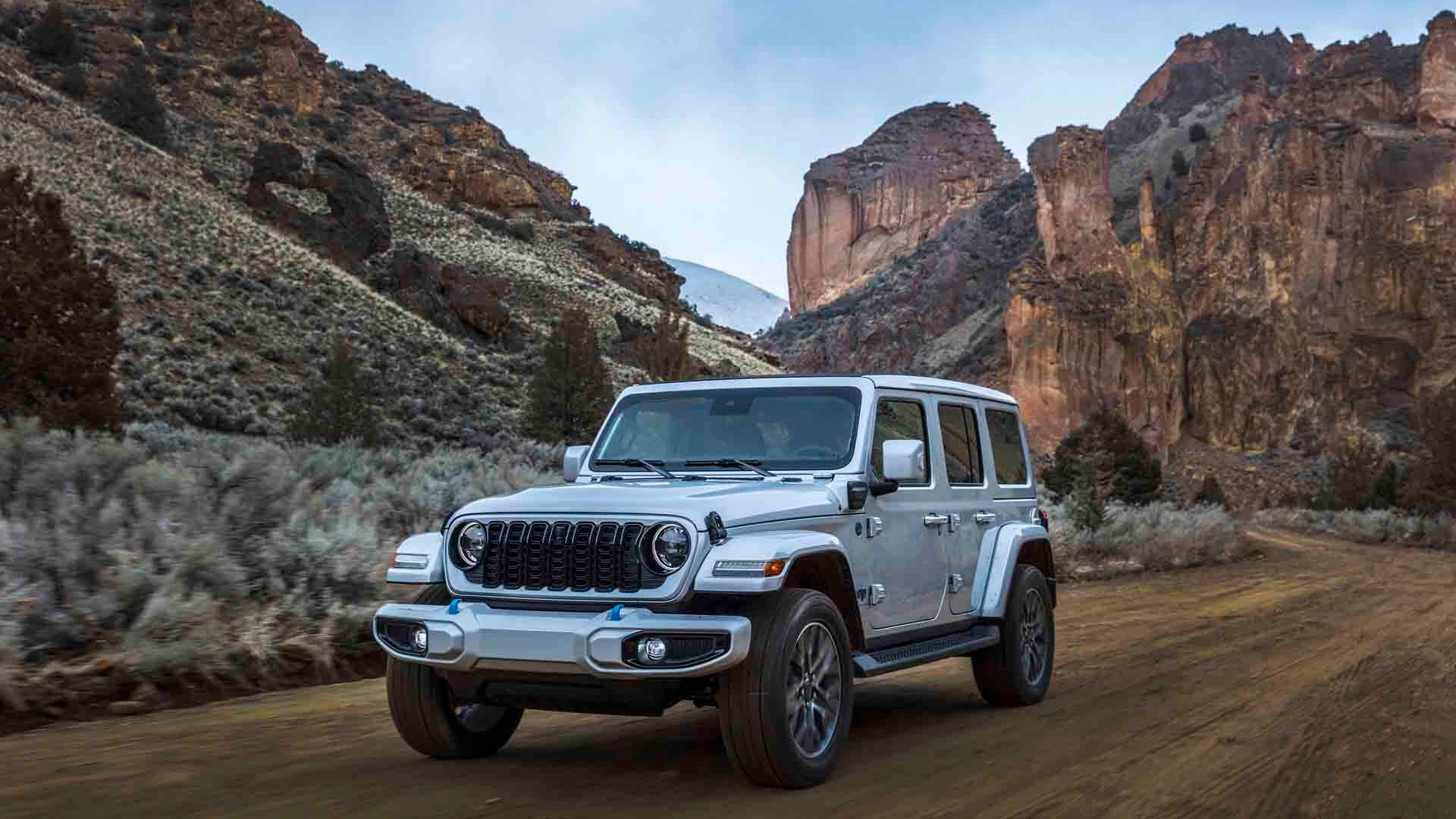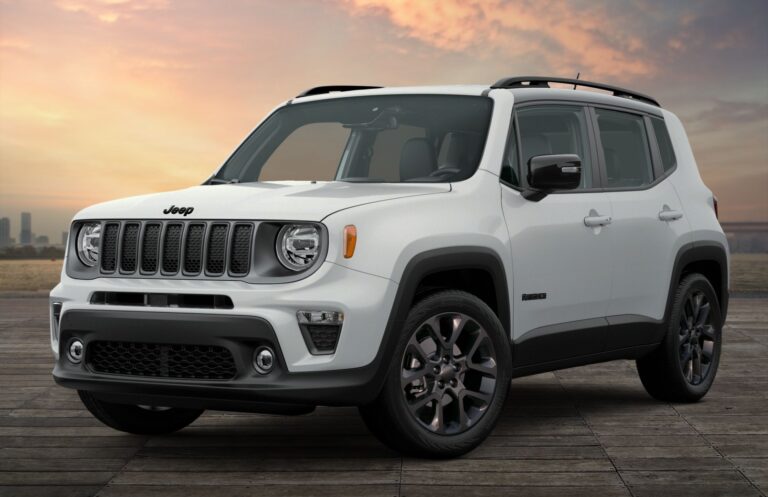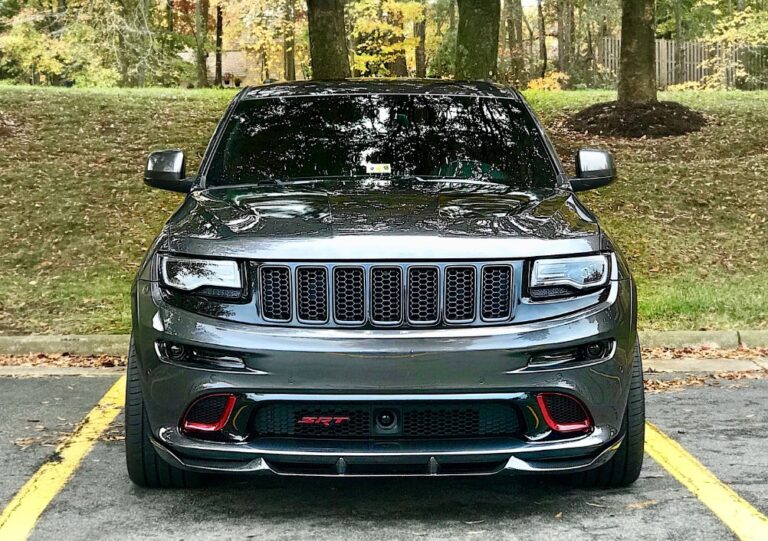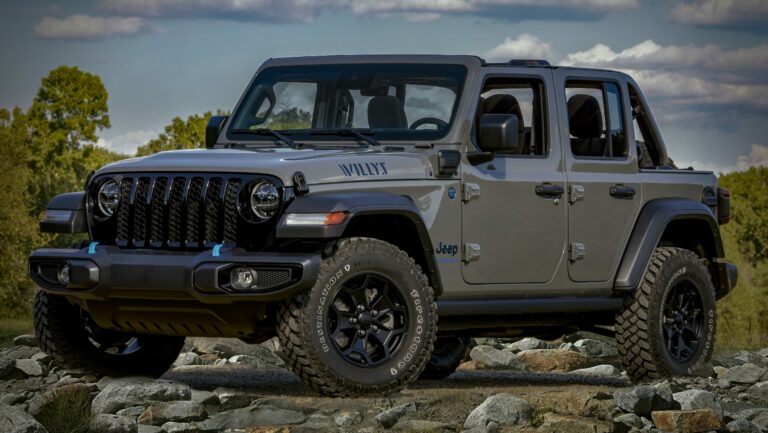Jeep Wrangler 2 Door 2005: A Comprehensive Guide to the Enduring Icon
Jeep Wrangler 2 Door 2005: A Comprehensive Guide to the Enduring Icon jeeps.truckstrend.com
The year 2005 marks a significant point in the lineage of an undisputed automotive legend: the Jeep Wrangler 2 Door. More than just a vehicle, the 2005 Jeep Wrangler TJ (the generation produced from 1997 to 2006) embodies a spirit of adventure, rugged simplicity, and unparalleled off-road capability. It represents the perfect blend of traditional Jeep aesthetics with crucial modern enhancements, particularly its coil spring suspension, which dramatically improved ride quality and articulation compared to its leaf-sprung predecessors. For many enthusiasts, the 2005 TJ is the sweet spot – offering the classic open-air, removable-door experience without the complex electronics or larger footprint of later generations. This article delves deep into what makes the 2005 Jeep Wrangler 2 Door a cherished classic, providing a comprehensive guide for owners, prospective buyers, and admirers alike.
The Enduring Legacy: Why the 2005 TJ Stands Out
Jeep Wrangler 2 Door 2005: A Comprehensive Guide to the Enduring Icon
The TJ generation, and specifically the 2005 model, holds a special place in the hearts of Jeep aficionados. It was the first Wrangler to feature a coil-spring suspension system on all four corners, a revolutionary change from the YJ’s leaf springs. This innovation drastically improved both on-road comfort and off-road articulation, making the TJ a more versatile and enjoyable vehicle for a wider audience, without sacrificing its legendary capability. The 2005 model year also saw the full integration of the 6-speed manual transmission (NSG370), which had been introduced late in the 2004 model year, offering improved gearing for both highway cruising and low-speed off-roading.
The 2005 TJ retains the classic round headlights, flat fender flares, and iconic seven-slot grille that define the Wrangler’s heritage. Its relatively compact size, short wheelbase, and excellent approach/departure angles make it incredibly agile on tight trails. It’s a vehicle built for purpose, with a rugged simplicity that appeals to those who prioritize function over excessive frills. This focus on core utility, combined with robust mechanicals and a vast aftermarket, ensures the 2005 TJ’s continued relevance and desirability in the used market.
Under the Hood: Engine and Drivetrain Options
The heart of the 2005 Jeep Wrangler 2 Door is its powertrain, offering a range of robust and proven options designed for durability and capability.
-
Engines:
- 4.0L PowerTech I6 (Inline-Six): This legendary engine (AMC 242) is the most sought-after and widely praised option. Known for its bulletproof reliability, abundant low-end torque, and ease of maintenance, the 4.0L produces 190 horsepower and 235 lb-ft of torque. It’s the ideal engine for off-roading, towing, and general daily driving. Its longevity is a testament to its design, often running for hundreds of thousands of miles with proper care.
- 2.4L PowerTech I4 (Inline-Four): Primarily found in the base SE models, this engine offers 147 horsepower and 165 lb-ft of torque. While more fuel-efficient than the 4.0L, it lacks the power and torque preferred by most enthusiasts, especially those planning significant modifications or serious off-roading.


Transmissions:
- 5-speed Manual (NV3550): Standard with the 4.0L engine for earlier TJs, a reliable manual transmission.
- 6-speed Manual (NSG370): Introduced late in the 2004 model year and standard for 2005 4.0L models, this transmission offers an extra gear for improved highway cruising (lower RPMs) and a better crawl ratio for off-roading. It’s generally well-regarded.
- 4-speed Automatic (42RLE): An optional automatic transmission, offering convenience for daily driving. While adequate, some off-roaders prefer the control of a manual, and the 42RLE can feel a bit sluggish compared to modern automatics.
-
Transfer Cases:
- Command-Trac NV231: Standard on most models, this part-time 4WD system offers 2Hi, 4Hi, and 4Lo settings. It’s robust and perfectly capable for most off-road scenarios.
- Rock-Trac NV241 (Rubicon only): Exclusive to the Rubicon trim, this heavy-duty transfer case boasts an impressive 4:1 low-range gear ratio (compared to the NV231’s 2.72:1), providing significantly more torque multiplication for extreme rock crawling.
-
Axles:
- Dana 30 Front / Dana 35 Rear: Standard on most Sport, Sahara, X, and SE models. The Dana 35 rear axle is often considered a weak point for heavy off-roading or larger tires, prone to breaking axle shafts.
- Dana 44 Front / Dana 44 Rear: Standard on the Rubicon model, these heavy-duty axles are significantly stronger and more desirable for serious off-road use, especially when paired with the factory air lockers. A Dana 44 rear axle was also an option on some non-Rubicon models.
Trim Levels and Key Features
The 2005 Jeep Wrangler 2 Door was available in several trim levels, each catering to slightly different preferences and budgets:
- SE: The base model, typically equipped with the 2.4L I4 engine and minimal features, designed for affordability and simple utility.
- X: A step up from the SE, often featuring the more desirable 4.0L I6 engine as standard or optional, and slightly more comfort features.
- Sport: The most popular and common trim, offering a good balance of features, comfort, and capability. It usually came with the 4.0L I6 and could be optioned with air conditioning, cruise control, and a hardtop.
- Sahara: Focused on more creature comforts and unique styling, the Sahara included body-color fender flares, premium cloth seats, specific graphics, and often came with more standard options like air conditioning.
- Rubicon: The pinnacle of off-road performance, the Rubicon package (introduced in 2003) came standard with front and rear Dana 44 axles, selectable Tru-Lok air lockers, the Rock-Trac NV241 transfer case (4:1 low range), 31-inch Goodyear Wrangler MT/R tires, and unique badging. It was designed from the factory to conquer the most challenging trails.
All 2005 2-door Wranglers shared core Jeep characteristics: removable doors, a fold-down windshield, and the choice of a soft top (standard) or a hardtop (optional). This modular design allows for an unparalleled open-air driving experience.
Off-Road Prowess: Why it’s a Legend
The 2005 TJ’s reputation as an off-road legend is well-earned. Its compact dimensions, short wheelbase (93.4 inches), and solid axle suspension design provide exceptional ground clearance and articulation. The powerful 4.0L engine delivers torque where it’s needed most, and the robust 4WD system ensures traction in challenging conditions. The Rubicon model, in particular, with its factory lockers and ultra-low gearing, is capable of tackling trails that many modified vehicles struggle with. The TJ’s simple, mechanical nature means fewer complex electronics to fail in harsh environments, making it a favorite for serious trail enthusiasts.
Ownership Experience: What to Expect
Owning a 2005 Jeep Wrangler TJ is a unique experience, balancing exhilarating freedom with practical considerations.
Benefits:
- Unmatched Off-Road Capability: Few vehicles can match the TJ’s performance on challenging trails, especially the Rubicon.
- Highly Customizable: The aftermarket support for TJs is immense, allowing owners to tailor their Jeep for any purpose, from mild trail use to extreme rock crawling.
- Strong Resale Value: TJs hold their value exceptionally well due to their iconic status and enduring demand.
- Simple Mechanics: The 4.0L engine and overall mechanical design are relatively straightforward, making many repairs and maintenance tasks manageable for the DIY enthusiast.
- Fun Factor: Driving a TJ with the top down and doors off is an experience unlike any other, fostering a strong sense of community among owners ("the Jeep wave").
Challenges:
- Ride Comfort: While improved over the YJ, the short wheelbase and solid axles can lead to a bouncy ride, especially on uneven pavement.
- Fuel Economy: The 4.0L engine, while reliable, is not fuel-efficient (typically 15-18 MPG combined).
- Noise Levels: Soft tops are prone to wind noise and offer less insulation than hardtops.
- Rust: Frame rust is a significant concern, particularly in areas where salt is used on roads. Body rust can also appear on fenders, rocker panels, and around the cowl.
- Safety: Compared to modern vehicles, the TJ lacks many advanced safety features.
- Storage: Interior space is limited, especially with the rear seat in place.
Maintenance Tips:
- Rust Prevention: Regularly inspect the frame (especially near the control arm mounts and skid plates) for rust. Clean out drain holes and apply rust inhibitors.
- Fluid Changes: Adhere to regular oil, transmission, transfer case, and differential fluid changes.
- Suspension Checks: Inspect control arm bushings, tie rod ends, and ball joints for wear, especially if you off-road.
- U-Joints: Regularly grease or inspect U-joints on the driveshafts.
- Common Issues: Be aware of common TJ quirks like leaky soft tops, blend door issues (AC/heat), and potential for the "death wobble" (though often caused by worn steering components).
Modifying Your 2005 TJ: A World of Possibilities
One of the greatest appeals of the 2005 TJ is its incredible modularity and the vast aftermarket support. From mild to wild, you can transform your Wrangler to suit your specific needs.
- Lift Kits: Ranging from basic spacer lifts to full long-arm suspension systems, lifts allow for larger tires and increased ground clearance.
- Tires and Wheels: Upgrading to larger, more aggressive off-road tires dramatically improves traction and capability. Common sizes range from 31-inch to 35-inch or larger.
- Bumpers and Armor: Aftermarket steel bumpers provide better approach/departure angles and protection, often with integrated winch mounts. Skid plates and rock sliders protect vital undercarriage components.
- Winch: Essential recovery gear for serious off-roaders.
- Lighting: LED light bars and auxiliary lights improve visibility on trails and at night.
- Performance Upgrades: Cold air intakes, exhaust systems, and regearing the axles (to optimize for larger tires) can enhance performance.
- Lockers: For non-Rubicon models, aftermarket lockers (selectable or automatic) can dramatically improve off-road traction.
Always research thoroughly before modifying, choose reputable brands, and ensure modifications are installed correctly to maintain safety and performance.
Buying a Used 2005 Jeep Wrangler TJ: A Buyer’s Guide
Purchasing a used 2005 TJ requires careful consideration, as many have been heavily used or modified.
- Inspection Checklist:
- Frame Rust (CRITICAL): This is the single most important thing to check. Inspect the entire frame, especially around the control arm mounts, skid plate areas, and where the body mounts meet the frame. Look for excessive scaling, holes, or previous patch jobs.
- Fluid Leaks: Check under the vehicle for oil, transmission fluid, or coolant leaks.
- Engine: Listen for unusual noises (knocks, ticks), check for smoke from the exhaust, and ensure smooth idling.
- Transmission: For manuals, check clutch engagement and smooth shifting. For automatics, ensure smooth shifts without slipping or harshness.
- 4WD System: Engage 4Hi and 4Lo to ensure the transfer case works correctly. Drive slowly in a straight line on a loose surface.
- Suspension: Look for worn bushings, cracked springs, or leaking shocks.
- Steering: Check for excessive play in the steering wheel, which could indicate worn steering components.
- Electrical: Test all lights, wipers, power windows (if equipped), and AC/heat.
- Test Drive: Drive on various surfaces, including highway speeds, to check for vibrations, steering issues ("death wobble"), and braking performance.
- History Check: Obtain a CarFax or AutoCheck report to look for accident history, flood damage, or salvage titles.
- Modifications: Be wary of overly modified Jeeps unless you’re familiar with the specific modifications and their quality. Poorly installed lifts or cheap components can lead to safety and reliability issues.
- Common Pitfalls: Avoid TJs with significant frame rust, major engine/transmission issues, or those that have been severely neglected.
Price Table: 2005 Jeep Wrangler 2 Door
Please note that used vehicle prices are highly variable based on condition, mileage, modifications, geographic location, and market demand. The ranges below are approximate for early 2024 for a vehicle in good, well-maintained condition.
| Trim Level | Original MSRP (Approx.) | Current Used Price Range (Good Condition) | Current Used Price Range (Excellent/Low Miles) | Key Differentiating Feature(s) |
|---|---|---|---|---|
| SE | $17,000 – $19,000 | $6,000 – $9,000 | $9,000 – $12,000 | 2.4L I4 engine, most basic features |
| X | $18,500 – $21,000 | $7,000 – $10,000 | $10,000 – $13,500 | 4.0L I6 engine often standard/optional, slightly more equipped |
| Sport | $20,000 – $24,000 | $8,000 – $12,000 | $12,000 – $16,000 | Most common, 4.0L I6, balance of features and capability |
| Sahara | $23,000 – $27,000 | $9,000 – $13,000 | $13,000 – $17,000 | More comfort-oriented, unique styling, often more options |
| Rubicon | $27,000 – $30,000 | $12,000 – $18,000 | $18,000 – $25,000+ | Dana 44 axles (F&R), lockers, 4:1 transfer case, 31" tires |
Note: Prices can vary wildly based on modifications (e.g., highly modified Rubicons can command much higher prices), regional demand, and overall condition. Always get a pre-purchase inspection.
Frequently Asked Questions (FAQ)
Q1: Is the 2005 Jeep Wrangler TJ reliable?
A1: Yes, the 2005 TJ, especially with the 4.0L I6 engine, is generally considered very reliable. The engine is known for its longevity, often exceeding 200,000-300,000 miles with proper maintenance. However, like any older vehicle, regular maintenance is key, and components like sensors, suspension parts, and U-joints will eventually need replacement.
Q2: What is the fuel economy like for a 2005 TJ?
A2: Fuel economy is not a strong suit. Expect around 15-18 MPG combined for the 4.0L engine, and slightly better for the 2.4L (around 18-20 MPG). Larger tires and lift kits will further reduce fuel efficiency.
Q3: What are the most common rust spots on a 2005 TJ?
A3: The most critical area is the frame, particularly where the control arms attach and near the skid plates. Other common rust spots include the body mounts, rocker panels, rear bumper, and areas around the cowl and windshield frame.
Q4: Can I daily drive a 2005 Jeep Wrangler 2 Door?
A4: Yes, many people daily drive their 2005 TJs. However, be aware of the compromises: a less refined ride, higher noise levels (especially with a soft top), limited cargo space, and less fuel efficiency compared to modern vehicles. It’s an experience, not just a commute.
Q5: Is the Rubicon trim worth the extra cost?
A5: For serious off-road enthusiasts who plan to tackle challenging trails, the Rubicon’s factory upgrades (Dana 44 axles, lockers, 4:1 transfer case) make it well worth the extra cost. Building a non-Rubicon to the same level of capability would likely cost significantly more in aftermarket parts and labor. For light trail use or daily driving, a Sport or X model is often sufficient and more budget-friendly.
Q6: What should I look for when buying a used 2005 TJ?
A6: Prioritize frame rust inspection above all else. Also check for fluid leaks, listen for unusual engine/transmission noises, test the 4WD system, and assess the condition of the suspension and steering components. A pre-purchase inspection by a trusted mechanic is highly recommended.
Conclusion
The 2005 Jeep Wrangler 2 Door stands as a testament to timeless design and enduring capability. It’s a vehicle that perfectly encapsulates the spirit of adventure, offering a raw, engaging driving experience that’s increasingly rare in modern automobiles. Whether you’re a seasoned off-roader, a weekend explorer, or simply someone who appreciates the freedom of open-air motoring, the 2005 TJ provides an authentic and rewarding ownership journey. While it demands attention to maintenance and an understanding of its unique characteristics, the joy and versatility it offers are unparalleled. Owning a 2005 TJ isn’t just about having a vehicle; it’s about embracing a lifestyle, joining a passionate community, and knowing that your rig is ready for whatever adventure lies ahead.




